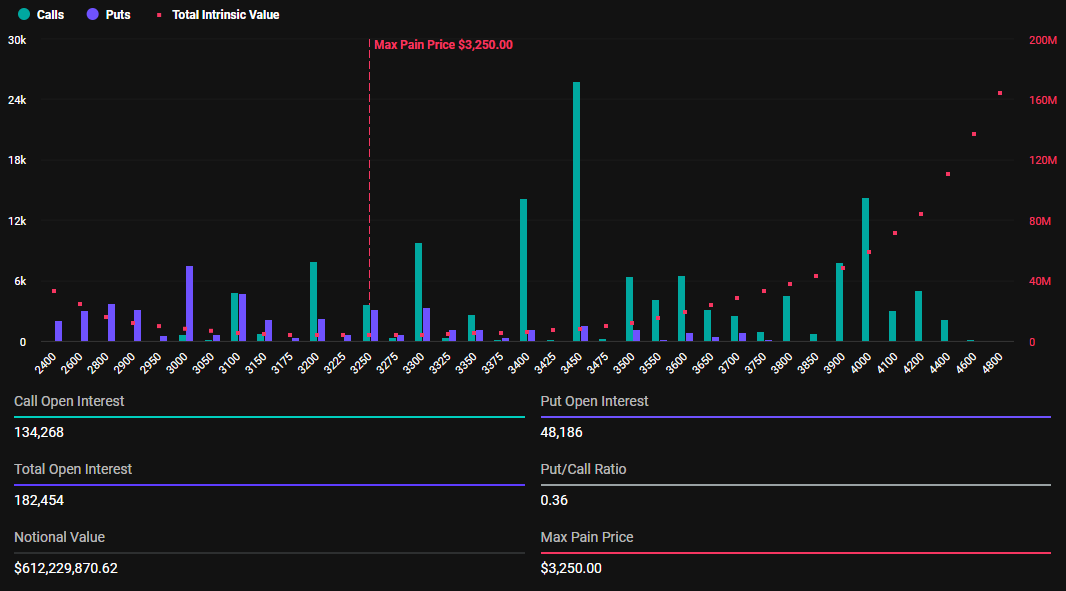Best Business Plan Template Free Your Guide
Launching a business? The daunting task of crafting a business plan often feels insurmountable. Fortunately, readily available free templates can significantly ease the burden. This guide explores the world of “best business plan template free” resources, examining their strengths, weaknesses, and essential components for creating a compelling and effective plan, regardless of your chosen template.
We’ll delve into the needs of various users seeking free templates, analyzing popular options and highlighting crucial elements frequently overlooked. From understanding market analysis to crafting impactful financial projections and visualizing your data effectively, this guide equips you with the knowledge to navigate the process successfully.
Understanding “Best Business Plan Template Free” User Needs
Individuals searching for a “best business plan template free” typically need a structured framework to organize their business ideas and present them effectively. Their primary goal is to create a compelling business plan without incurring the cost of purchasing a premium template or hiring a consultant. However, they face challenges ranging from lack of business planning experience to finding a template that suits their specific needs and industry.
User Profiles Seeking Free Business Plan Templates
Understanding the diverse motivations and desired outcomes of users is crucial for designing effective and helpful free templates. Three distinct user profiles commonly emerge: the aspiring entrepreneur, the small business owner, and the student.
| Profile | Primary Need | Secondary Need | Expected Template Features |
|---|---|---|---|
| Aspiring Entrepreneur | A basic framework to structure their initial business idea and explore its viability. | Guidance on key sections like market analysis and financial projections, even if simplified. | Clear instructions, simple language, sections for market research, competitive analysis, and basic financial projections (revenue, expenses). Perhaps a section for a value proposition canvas. |
| Small Business Owner | A functional template to update their existing business plan or create a leaner version for specific purposes (e.g., loan application). | A template that is easily adaptable to their specific industry and business model, potentially with options for customization. | Flexibility to add or remove sections, customizable branding options, compatibility with common file formats (Word, PDF), and space for detailed financial information including profit & loss statements and cash flow projections. |
| Student | A template to fulfill an academic assignment or coursework requirement, often with a focus on specific business concepts. | A template that aligns with the specific requirements and guidelines provided by their instructor, potentially including specific sections or formatting requirements. | Clear section headings aligned with common business plan components (executive summary, company description, market analysis), space for citations and references, and compatibility with the required submission format. A simple design to avoid distraction. |
Analyzing Free Business Plan Templates
Finding a suitable business plan template can be a significant first step in launching a venture. Many free templates are readily available online, offering a seemingly convenient solution. However, a critical analysis of these resources reveals both advantages and significant limitations. Understanding these nuances is crucial for entrepreneurs seeking to create a robust and effective business plan.
Comparison of Three Popular Free Business Plan Templates
Three popular free business plan templates often cited include those offered by SCORE, Bplans, and LivePlan (although LivePlan offers a free trial, not a fully free template). SCORE templates tend to be more straightforward and concise, suitable for simpler business models. They often lack the depth and detail found in other options. Bplans offers a wider variety of templates, catering to different industries and business structures.
However, navigating their site to find the right template can sometimes be challenging. LivePlan’s free trial, while not a fully free template, often includes more advanced features and detailed guidance but requires a commitment to the trial period. In terms of strengths, SCORE excels in simplicity, Bplans in variety, and LivePlan (trial) in comprehensiveness. Weaknesses include SCORE’s lack of detail, Bplans’ navigation complexity, and LivePlan’s time-limited access.
Limitations of Relying Solely on Free Templates
Free business plan templates, while useful starting points, often lack the customization and support needed to create a truly effective plan. Their generic nature may not adequately reflect the specific nuances of a particular business idea, potentially leading to a less persuasive or comprehensive document. Furthermore, the lack of expert review or feedback can result in critical omissions or inaccuracies.
Finally, relying solely on a free template might inadvertently limit the entrepreneur’s understanding of the key components of a successful business plan, hindering their ability to effectively articulate their vision and strategy to potential investors or lenders.
Crucial Elements Often Missing in Free Templates
Free templates often fall short in several key areas. It’s essential to supplement these templates with additional research and detail.
- Detailed Financial Projections: Many free templates provide basic financial statements, but lack the depth needed for comprehensive forecasting, including detailed revenue projections, expense breakdowns, and cash flow analysis across multiple years.
- Competitive Analysis: A thorough competitive analysis is often absent or superficial in free templates. A robust plan should deeply analyze the competitive landscape, identifying key competitors, their strengths and weaknesses, and strategies for differentiation.
- Marketing and Sales Strategy: While a marketing plan might be included, free templates often lack the detail required for a compelling strategy. This should include target market definition, marketing channels, sales tactics, and measurable key performance indicators (KPIs).
- Management Team Expertise: Free templates rarely delve into the details of the management team’s experience and expertise. A strong business plan highlights the team’s qualifications and capabilities, demonstrating their ability to execute the plan.
- Appendix with Supporting Documents: An appendix is crucial for providing supporting data, such as market research reports, resumes of key personnel, and permits or licenses. Free templates often neglect this essential element.
Essential Components of a Strong Business Plan (Regardless of Template)
A well-structured business plan is crucial for securing funding, guiding operations, and achieving long-term success. While templates offer a helpful framework, the true strength of a business plan lies in its content, reflecting a deep understanding of the market, the business model, and the financial projections. This section will delve into the essential components that contribute to a robust and compelling business plan, regardless of the template used.A comprehensive business plan requires more than just filling in blanks; it demands thorough research, realistic assessments, and a clear vision for the future.
Each section should be meticulously crafted to present a cohesive and persuasive narrative that showcases the viability and potential of your business venture.
Market Analysis: Understanding Your Target Audience and Competition
A detailed market analysis is the cornerstone of any successful business plan. It demonstrates your understanding of the industry landscape, your target customer, and your competitive advantage. This section should go beyond simple market size estimations; it needs to analyze market trends, identify key players, assess their strengths and weaknesses, and pinpoint opportunities for your business to thrive. For example, a new bakery might analyze consumer preferences for specific types of bread, the pricing strategies of existing bakeries, and identify potential underserved niches (e.g., gluten-free options, organic ingredients).
By understanding the competitive landscape and the unmet needs of the market, you can craft a value proposition that resonates with your target audience and sets your business apart. Failure to conduct thorough market research can lead to misaligned products, ineffective marketing, and ultimately, business failure. A robust market analysis should include data on market size, growth rate, segmentation, and customer demographics, supported by reliable sources like industry reports and market research databases.
Executive Summary: A Concise Overview of Your Business
The executive summary acts as a concise snapshot of your entire business plan. It should be written last, after all other sections are complete, to ensure accuracy and coherence. It summarizes the key aspects of your business, including your mission, products or services, target market, competitive advantages, financial projections, and funding requests (if applicable).Here’s a sample executive summary for a hypothetical bakery:
“Sweet Surrender Bakery is a new artisan bakery specializing in handcrafted breads, pastries, and custom cakes. We target health-conscious consumers and those seeking high-quality, locally-sourced ingredients. Our competitive advantage lies in our commitment to organic and sustainable practices, combined with a unique product line and personalized customer service. Our financial projections indicate profitability within the first year, based on conservative sales estimates and efficient cost management. We are seeking $50,000 in seed funding to cover initial equipment purchases and marketing expenses.”
Financial Projections: Forecasting Your Business’s Financial Performance
Creating compelling financial projections requires a systematic approach. This section should Artikel your revenue projections, cost of goods sold, operating expenses, and profitability over a specific timeframe (typically 3-5 years). Key metrics to include are revenue, gross profit margin, net profit margin, and cash flow. Assumptions should be clearly stated and justified. For example, you might assume a 10% annual growth in revenue based on market research and your sales strategy.
It is crucial to use realistic and conservative estimates to avoid overpromising and to account for potential unforeseen circumstances. Sensitivity analysis, exploring different scenarios (best-case, worst-case, and most likely), can enhance the credibility of your financial projections. This analysis allows you to demonstrate your understanding of the potential risks and uncertainties inherent in your business venture. For instance, a bakery might explore scenarios with varying customer traffic, ingredient cost fluctuations, and marketing campaign effectiveness.
These scenarios will provide a range of potential outcomes, showcasing a thorough understanding of the financial landscape.
New Business Plan Considerations
Developing a business plan, whether for a nascent venture or an established enterprise aiming for growth, requires a nuanced approach. The strategic goals, market analysis, and financial projections differ significantly depending on the stage of the business lifecycle. Understanding these key distinctions is crucial for crafting a successful and effective plan.
Key Differences Between Startup and Expansion Business Plans
The fundamental differences between planning for a startup and planning for expansion lie in the existing infrastructure, market presence, and financial history. A startup plan focuses heavily on proving market viability and securing initial funding, while an expansion plan builds upon an established foundation, aiming to leverage existing resources for growth.
- Market Analysis: Startups require extensive market research to validate their business model and identify their target audience. Expansion plans, conversely, leverage existing market data and customer insights to inform strategic decisions about new product lines, geographical expansion, or enhanced services.
- Financial Projections: Startup plans focus on demonstrating profitability within a specified timeframe, often requiring detailed projections of revenue, expenses, and funding needs. Expansion plans incorporate historical financial data to project future growth, focusing on return on investment for new initiatives.
- Management Team: Startup plans heavily emphasize the experience and expertise of the founding team. Expansion plans may highlight the need for additional personnel or expertise to support growth initiatives, often outlining recruitment strategies.
- Funding Requirements: Startups usually require significant seed funding or venture capital. Expansion plans may involve securing loans, issuing equity, or reinvesting profits to finance growth initiatives. The funding sources and their associated terms are distinctly different.
- Risk Assessment: Startup plans involve a higher degree of uncertainty and risk, necessitating comprehensive risk mitigation strategies. Expansion plans build upon existing risk management frameworks, focusing on mitigating risks associated with new markets, products, or services.
Conducting Thorough Market Research for a New Business Idea
Effective market research is the cornerstone of any successful business venture. It helps validate the business idea, identify target customers, and understand the competitive landscape. A systematic approach is crucial to gather accurate and actionable insights.
- Define your target market: Identify the specific demographics, psychographics, and needs of your ideal customer. For example, a new organic food delivery service might target health-conscious millennials in urban areas.
- Analyze your competition: Research existing businesses offering similar products or services. Identify their strengths and weaknesses, pricing strategies, and marketing approaches. A competitive analysis for a new coffee shop would include analyzing existing coffee shops in the area, their pricing, and customer reviews.
- Conduct primary research: Gather firsthand data through surveys, interviews, and focus groups to understand customer preferences and needs. For instance, a survey could gauge consumer interest in a new type of sustainable packaging for a product.
- Analyze secondary research: Utilize publicly available data from market research reports, industry publications, and government sources to gain a broader understanding of market trends and dynamics. This could include reports on the growth of the vegan food market for a new vegan restaurant.
- Validate your assumptions: Continuously test your hypotheses and refine your market analysis based on the data collected. A successful example would be adjusting a product’s features based on customer feedback from beta testing.
Legal and Regulatory Considerations for Launching a New Business
Navigating the legal and regulatory landscape is critical for a successful business launch. Requirements vary significantly across industries, necessitating a thorough understanding of relevant laws and regulations.
- Food Service:
- Food safety permits and licenses (e.g., FDA, local health department)
- Compliance with food handling and sanitation regulations
- Alcohol permits (if applicable)
- Employee health and safety regulations
- Technology:
- Intellectual property protection (patents, trademarks, copyrights)
- Data privacy and security compliance (e.g., GDPR, CCPA)
- Software licensing agreements
- Compliance with export control regulations (if applicable)
- Retail:
- Business licenses and permits
- Sales tax registration
- Compliance with consumer protection laws
- Accessibility regulations for physical stores
Visualizing the Business Plan
A well-designed business plan shouldn’t just be a wall of text. Effective visuals significantly enhance readability and comprehension, making your plan more persuasive and easier for investors or lenders to digest. By strategically incorporating charts and graphs, you can transform complex data into easily understandable representations, showcasing your business’s potential for growth and profitability.Visuals are crucial for communicating key financial data and market trends concisely.
They transform abstract numbers into compelling narratives, allowing readers to quickly grasp the essence of your financial projections and market analysis. Furthermore, visually appealing charts and graphs can make your business plan more engaging and memorable, increasing the likelihood that your audience will retain the key information.
Visual Representations of Key Financial Data
Effective visualization of financial data relies on choosing the right chart type for the data being presented. For instance, revenue projections over time are best represented using a line graph. This clearly shows the trend of growth or decline. Imagine a line graph showing steadily increasing revenue over a five-year period, starting at $50,000 in year one and reaching $250,000 in year five.
The upward slope visually reinforces the projected growth.Profit margins, on the other hand, are often best displayed using a bar chart or column chart. A bar chart could compare profit margins across different product lines or services. For example, a bar chart could show that Product A has a 20% profit margin, Product B has a 15% profit margin, and Product C has a 25% profit margin.
The differing lengths of the bars immediately highlight the comparative profitability of each product. A pie chart could also effectively illustrate the proportion of overall profit attributed to each product.For showing market share or the breakdown of customer demographics, a pie chart would be a suitable choice. A pie chart visually represents the proportional distribution of a whole.
For instance, a pie chart could depict the market share of various competitors in a specific industry, with each slice representing a different company’s percentage of the market.
Infographic Design: Mobile App Development Company
This infographic summarizes the key takeaways of a hypothetical business plan for a mobile app development company, “AppSpark.”The infographic would begin with a bold headline: “AppSpark: Revolutionizing Mobile Experiences.” Below this, a concise mission statement would be presented: “To create innovative and user-friendly mobile applications that solve real-world problems.”Next, a series of icons and short text blocks would highlight key aspects of the business plan.
One section, using a bar chart icon, would showcase projected revenue growth over three years ($100,000, $250,000, $500,000). Another section, using a target icon, would display key market segments (e.g., 30% targeting businesses, 70% targeting consumers). A third section, using a smartphone icon, would briefly list the company’s flagship app features (user-friendly interface, advanced security, seamless integration).
Finally, a small team photo would add a human element, showcasing the founders’ expertise and dedication. The overall design would utilize a clean, modern aesthetic with a consistent color palette. The use of clear icons and minimal text ensures that the infographic is easy to understand and visually appealing.
Summary
Ultimately, while free business plan templates offer a valuable starting point, remember that a successful business plan requires more than just a well-structured document. It necessitates thorough research, a clear understanding of your market, and a compelling vision for your venture. By combining the convenience of a free template with diligent planning and strategic thinking, you can lay a solid foundation for your business’s success.
Question & Answer Hub
What are the legal implications of using a free business plan template?
Free templates generally don’t offer legal advice. You are responsible for ensuring your business plan complies with all relevant laws and regulations.
Can I use a free template for a complex business model?
While free templates can be adapted, highly complex businesses might require more customized features than a free template can provide. Consider professional assistance for intricate models.
How often should I update my business plan?
Regularly review and update your business plan, ideally annually, or whenever significant changes occur in your business or market.
Are there any hidden costs associated with using free templates?
While the template itself is free, you might incur costs for related services like market research or professional consultation.



